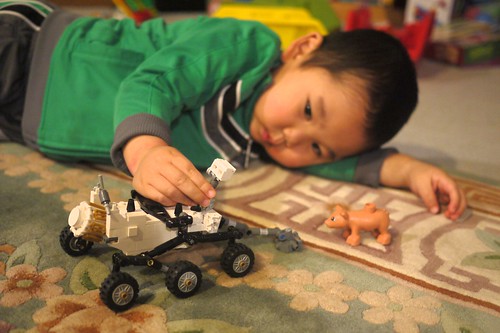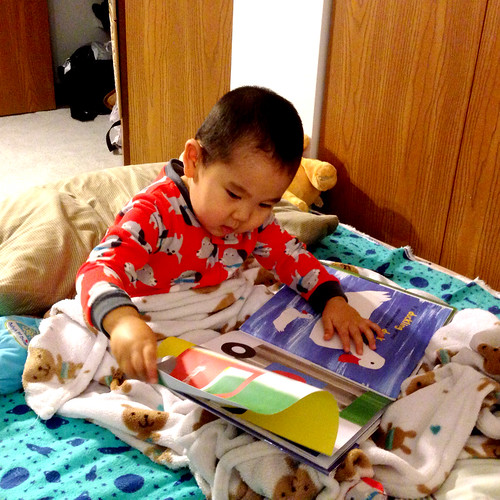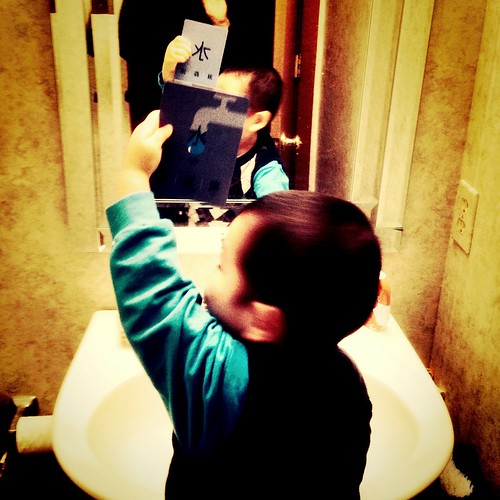 |
| The Curiosity Rover was exploring and found something. |
A substantial part of the Christmas loot was in the form of LEGO, and we seem to have hit a critical mass so it gets a lot more play time. Now that we got a couple of larger sets, we hit critical mass in a couple of aspects. First, we have a number of pieces that you can make things. Duplo blocks are so large and there are a limited number of forms (2X2, 4X2, 2X1 tall bricks, then 4X2 plates are the dominant choices) so before, essentially all T was doing was making towers and variations. Now, because we got a couple large Duplo sets we have several types of roofs and shear numbers so it can be more interesting (he can build structures, not only façades.) And he can build things so that they are recognizable. Second, we have a much larger number of Duplo figures. In addition to the grandpa, brother, sister, and little brother we have added two firemen, a medic, and a zoo-keeper. So the stories he says while playing have become richer. Adding two fire vehicles and an ambulance helps (although this was not as much an issue as LEGO vehicles and his Home Depot and Lowes cars and planes have always mixed freely).
He has started some creative play. He tries to recreate story lines from books or shows, and there are some other story lines he gets into that we don't recognize. More recently we have started taking a page from homeschooler lessons where we give him something to copy. And occasionally he goes from that to making his own modifications.
But in terms of creativity, it is pretty clear to him that the standard LEGO bricks have a lot more possibilities. So far, they are special treats that are brought out as a reward for good behaviour (and in the case of the Curiosity Rover and the Master Builder Academy Robot set, a special and rare reward) There are a couple of small cars (~40 pieces) and a train (~50 pieces) that he we have him help build before he can play with them. Over the past month, he is able to do more and more of the building (there is one set he can almost make himself). At this point, there is little creativity involved. Like the Duplos before, we don't have enough pieces to do that, but as his fingers get stronger and he
starts learning some of the rules of structure, we'll move to those.

In other news, he has finally gotten settled into his room at day care after being moved to the three's room. Every time he spends time with his cousin's in Chicago, his social skills jump up a notch (and having spent a few months in the three's room helps too). Funny story: when a group of kids moved up from the two's room this month, apparently he was trying to show them around and telling them how things worked now that he is no longer the new kid in the room.
We've started music lessons. At this point, this means do-re-mi and working on aural skills and reading the staff. It is amusing to watch since he has only limited fine motor skills so he counts by nodding his head :-P
He has mostly moved from board books to the first level of readers. The fun ones are the Scholastic LEGO books for beginning readers. It helps that we have some of the right LEGO figures as well. He has reached the point where he can "read" the book (meaning, he has somewhat memorized the book and in the parts he can't remember, he makes up something to fill it in.) In parallel, we have started him with phonics. The trick here is to find words that are fit for phonics that he does not known only because he has memorized the book we are reading.
Things for the future. Getting him to sleep by himself (he now can be in his own bed (for part of the night) but still wants someone in the room), and the ongoing hope that he becomes more social.




